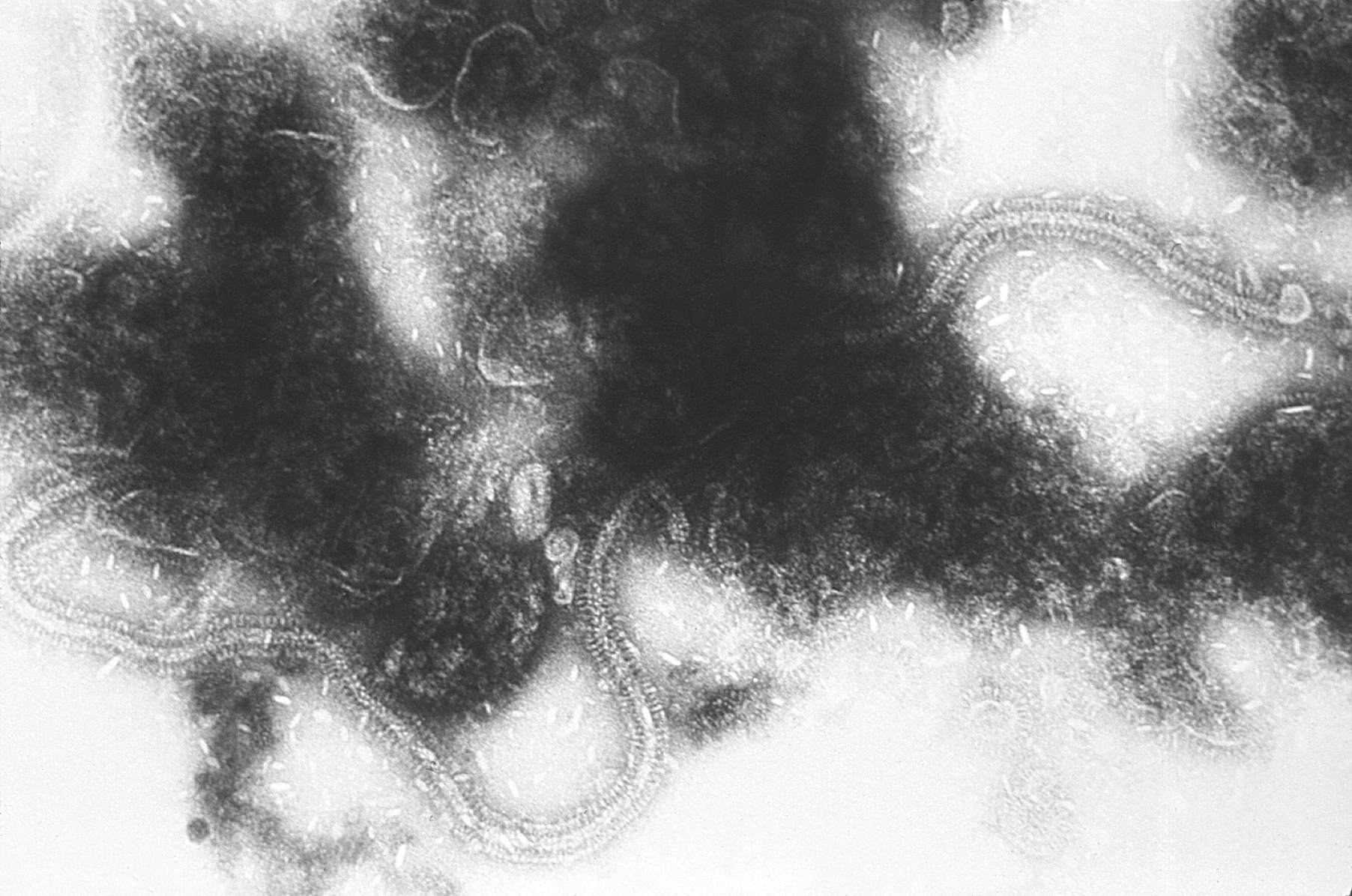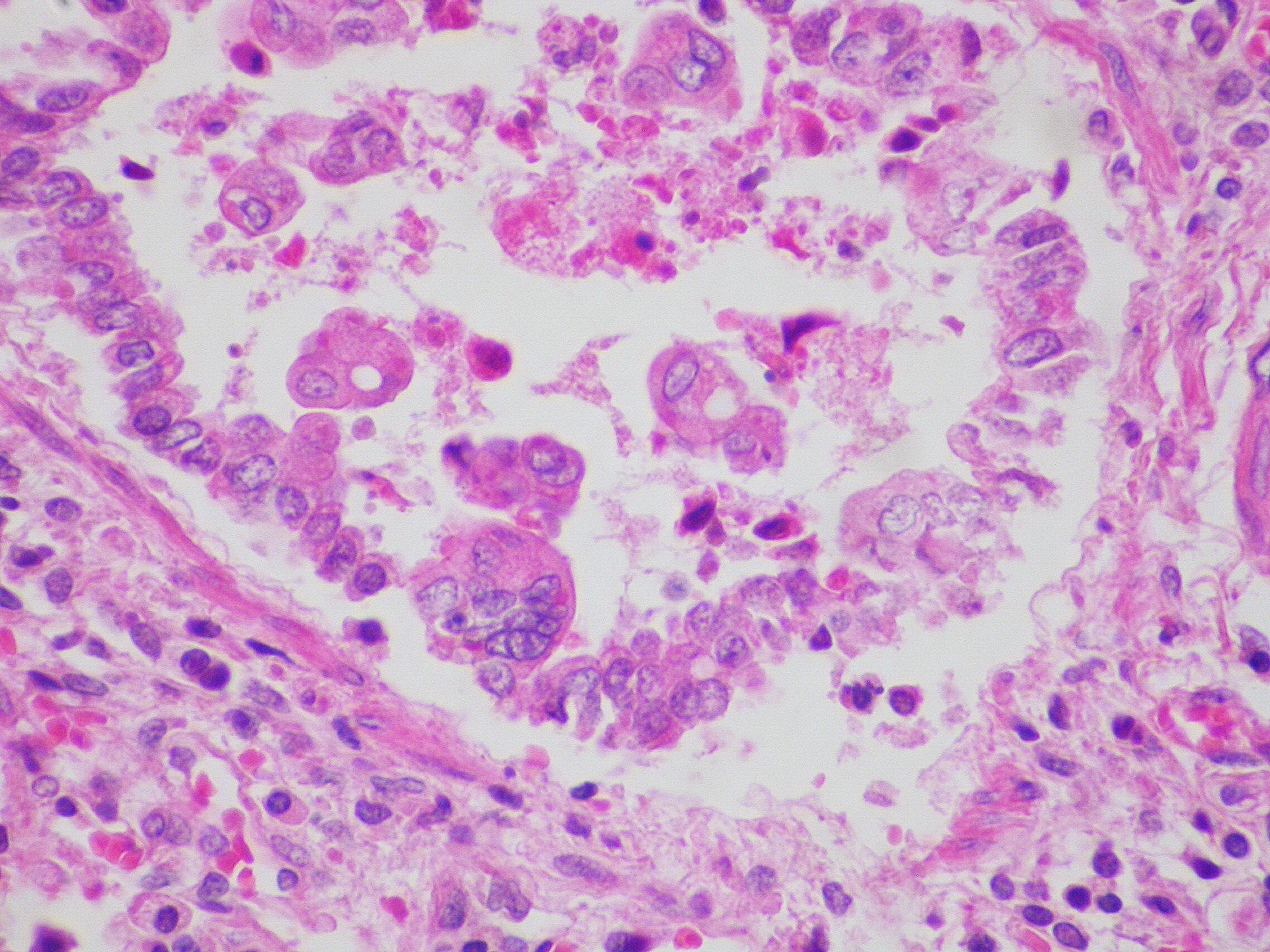Respiratory Syncytial Virus (RSV)
Report a Case
Disease Reporting Line:
(808) 586-4586
About This Disease
Respiratory Syncytial Virus (RSV) is a respiratory illness that infects the lungs and bronchioles. Once infected, people usually experience cold-like symptoms, but sometimes illness can be severe, especially for infants and the elderly. Illness usually occurs in infants and small children, but anyone can become ill once infected. Like most respiratory viruses, symptoms include fever, cough, sore throat, sneezing, wheezing, irritability in young infants, and decreased appetite. Severe cases with breathing difficulties may need hospitalization with supplemental oxygen, suctioning of mucus from the airways, and possible intubation. Individuals who are at high risk for sever disease include premature infants, children less than 2 years old, children with chronic lung or heart conditions, and children with weakened immune systems. Transmission occurs from person-to-person by either close contact with an infected individual, coughs or sneezes from an infected individual, or touching surfaces contaminated with the virus. Researchers are currently working on a vaccine, but none are available yet. There is a drug called palivizumab that is used to prevent severe RSV illness in infants and children who are at high risk. The best way to protect yourself is to wash your hands with soap and water, cover your mouth and nose when sneezing or coughing, avoid touching your face with unwashed hands, avoid close contact with sick individuals, and cleaning contaminated surfaces. There currently is no routine surveillance for RSV in Hawaii. Learn more about non-influenza respiratory viruses.
Signs and Symptoms
RSV symptoms usually begin 4 to 6 days after exposure. Symptoms usually begin with a runny nose and decrease in appetite and then develop into coughing, sneezing, fever, and sometimes wheezing. In very young infants irritability, decreased activity, and breathing difficulties occur and may be the only symptoms to arise. Full recovery from illness occurs in about 1 to 2 weeks.
Transmission
RSV is spread from person-to-person contact that could involve close personal contact, the air that an infected individual has coughed or sneezed in, kissing a sick individual, or touching an object or surface contaminated with RSV and then proceeding to touch one’s mouth, nose, or eyes. RSV can survive on contaminated surfaces for many hours and on soft surfaces, such as tissues and hands, for a shorter period of time.
Diagnosis
Healthcare visits for RSV are very common. During the visit, the provider will only assess the severity of disease and whether the ill patient needs to be hospitalized or not. Laboratory diagnosis is usually not performed, although there tests available at Hawaii’s major clinical laboratories.
Treatment
There is currently no antiviral treatment for RSV infection, much like the other non-influenza respiratory viruses.
Risk in Hawaii
The Hawaii Department of Health reports RSV cases to CDC’s National Respiratory Enteric Virus Surveillance System (NREVSS). Click here to view data. CDC reports that RSV has been detected nationally in the fall, winter, and spring months. Almost all children will have had an RSV infection by 2 years of age. People of any age can get another RSV infection. Premature infants, children less than 2 years old, those with heart or chronic lung issues, children with weakened.
Prevention
The best way to prevent any respiratory infection is to avoid close contact with sick individuals, proper hand hygiene, and avoid touching your face (especially mouth, nose, and eyes). The best way a sick individual can prevent further spread is to stay home from school or work, cover their nose and mouth when sneezing and coughing, proper hand hygiene, and avoid kissing your children while sick.
Additional Resources
Information for Clinicians
RSV causes a variety of respiratory illnesses. Out of every 100 infants with RSV infection, 25-40% will develop bronchiolitis or pneumonia. Those infants and children at high risk (those with weakened immune systems, premature infants, and children with chronic lung or heart issues) have an even greater risk of developing severe disease. Mild illness includes runny nose, decrease in appetite, cough, sneezing, fever, and sometimes wheezing. In very young infants the only symptoms may be irritability, decreases activity, and apnea. Infants needing hospitalization may require oxygen, intubation, and/or mechanical ventilation. Hospitalization may only last a few days.
In adults, RSV infection usually lasts less than 5 days. Symptoms include runny nose, sore throat, cough, headache, fatigue, and fever. Those at high risk (individuals with chronic illnesses or weakened immune systems) may have symptoms compatible with pneumonia.
Hawaii’s major clinical laboratories have antigen detection tests, as well as RT-PCR assays that can detect RSV infection. The State Laboratories Division of Hawaii’s Department of Health also has the capability to run a RT-PCR respiratory virus panel batch once a month for cases that occur in outbreaks and clusters that occur in healthcare facilities, daycares, and schools.
Researchers are working on a vaccine, but none are available yet. Palivizumab is a drug that is available to prevent severe illness in children and infants at high risk only. Other than that, there is no antiviral treatment for RSV infection. To prevent outbreaks in healthcare settings, follow droplet and standard infection control precautions.
For more information: Centers for Disease Control and Prevention (CDC)
Last Reviewed: December 2018



